
The Best of Everything
Encyclopedia Entry • Films Main
The Circle
1925

Critics' Reviews • Our Reviews • Movie Posters • Lobby Cards • Misc.
Click here to see photos from the film.
|
US release: 9/22/25. DVD release: 11/12.
Cast: Eleanor Boardman, Malcolm McGregor, Alec B. Francis, Eugenie Besserer, George Fawcett, Creighton Hale, Otto Hoffman, Eulalie Jensen, Buddy Smith, Joan Crawford ("Young Lady Catherine"), Frank Braidwood, Derek Glynne.
Credits: Based on the 1921 play The Circle by W. Somerset Maugham. Screenplay: Kenneth B. Clarke. Director: Frank Borzage. Camera: Chester Lyons. Editor: Aubrey Scotto. Costumes: Ethel P. Chaffin. Art Direction: Cedric Gibbon, James Basevi.
Plot Summary: In the waning years of the last century, Hugh Porteous, who was to have been the best man at the wedding of Lady Catherine to Lord Cheney, persuades Catherine to elope with him instead. Thirty years pass. Elizabeth, the wife of Lady Catherine's son, Arnold, invites Hugh and Catherine to the country for a visit. Elizabeth is thinking of running off with Edward Lutton and wants to see how well the marriage of her husband's parents has survived the years; what she sees drives her to elope with Lutton. Her husband impersonates the chauffeur, drives the couple to a secluded spot, and thrashes Lutton. He and Elizabeth then return home, resuming married life with a new understanding. ~AFI
|
derekwinnert.com (2018)
ithankyouarthur blogspot (2013)
themotionpictures.net (2012)
silentsaregolden.com (2012)
If you've seen The Circle and would like to share your review here, please e-mail me. Include a photo of yourself or avatar and a star-rating (with 5 the best), as well as any of your favorite titles from the film.
|
Rating:
Joan
appears only in the first 6 or 7 minutes of this "modern"
(1920s) semi-morality tale that explores a concept
then newly popular among the Moderns of the '20s: Should
you leave a seemingly priggish husband in favor of a potentially exciting
one?
Former
cuckolded father Lord Clive Cheney (Alec Francis) is supposedly away in London
during this time, but re-appears suddenly, to the dismay of all
present. (As in the 1890s opening, Lord Cheney comes in discussing
guns...still a MacGuffin, and sorry for the Spoiler Alert, but...no one's about to be shot!)
Thanks to some machinations from Lady Catherine, and an abrupt about-face in behavior from Arnold, all is not quite lost, however! (In the meantime, Lord Cheney and Hugh Porteous are still in the library, tipsily cackling over old times: "Pretty fair little joke on someone---eh, what, Hughie?")
Joan looks full-faced and pretty in her few moments early in the film (and in the exhibited photograph). But, alas, her middle-parted marcelled hair and pencilled-in, skyward-bound eyebrows are not at all appropriate for the alleged 1890s. And her gauzy and flouncy gown (with shoulder accoutrements anticipating the famous Letty Lynton dress in 1932) is similarly not quite right for the time period. But that's just being nit-picky. The part is too small to be any sort of "star-maker" and she does a perfectly good job in her brief time onscreen. (See this site's Images 1925 page for screen shots from the film.)
Director Frank Borzage seems a bit dull after the inventive editing and photography that I just recently watched in Pretty Ladies (also 1925, directed by Monta Bell). Most scenes in The Circle take place in one or two rooms, and are shot statically from the front, as if we're watching a play. There are a couple of shots through the library window out into the garden---of those indoors secretly watching those outdoors. And a couple of shots of Lady Catherine and Porteous motoring to the estate---shot from behind, so we can't yet see what they look like after 30 years. But aside from these mildly interesting shots, there's nothing particularly outstanding, especially given the new-fangled creative opportunities of cinema.
Borzage
would go on to direct 3 more Joan films: Mannequin (1937),
The Shining Hour (1938), and Strange Cargo (1940).
The first two similarly pedestrian, but the latter a bit extraordinary! Cheney: When you ran away from me, Kitty, I was sore and angry and miserable. But above all I felt a fool. Lady Kitty: Men are so vain. Cheney: But I was a student of history, and presently I reflected that I shared my misfortune with very nearly all the greatest men. Lady Kitty: I’m a great reader myself. It has always struck me as peculiar. Cheney: The explanation is very simple. Women dislike intelligence, and when they find it in their husbands they revenge themselves on them in the only way they can, by making them—well, what you made me. Lady Kitty: It’s ingenious. It may be true. Cheney: I felt I had done my duty by society and I determined to devote the rest of my life to my own entertainment. The House of Commons had always bored me excessively and the scandal of our divorce gave me an opportunity to resign my seat. I have been relieved to find that the country got on perfectly well without me. Lady Kitty: But has love never entered your life? Cheney: Tell me frankly, Kitty, don’t you think people make a lot of unnecessary fuss about love? Lady Kitty: It’s the most wonderful thing in the world. Cheney: You’re incorrigible. Do you really think it was worth sacrificing so much for? Lady Kitty: My dear Clive, I don’t mind telling you that if I had my time over again I should be unfaithful to you, but I should not leave you. Cheney: For some years I was notoriously the prey of a secret sorrow. But I found so many charming creatures who were anxious to console that in the end it grew rather fatiguing. Out of regard to my health I ceased to frequent the drawing-rooms of Mayfair. Lady Kitty: And since then? Cheney: Since then I have allowed myself the luxury of assisting financially a succession of dear little things, in a somewhat humble sphere, between the ages of twenty and twenty-five. Lady Kitty: I cannot understand the infatuation of men for young girls. I think they’re so dull. Cheney: It’s a matter of taste. I love old wine, old friends and old books, but I like young women. On their twenty-fifth birthday I give them a diamond ring and tell them they must no longer waste their youth and beauty on an old fogey like me. We have a most affecting scene, my technique on these occasions is perfect, and then I start all over again.... -------------------------------- THIS compensatory reality of Cheney's---much more interesting than what the shallow young lovers might or might not do---is what the film should have captured more effectively but does not. Recommended reading: The text of Maugham's play from Project Gutenberg.
Rating: The Circle (1925) is a nice little movie that, in my opinion, has three things to recommend it. First, it is based on a story by Somerset Maugham, keen observer of the human condition, and one of the most popular writers of his day. Maugham knew how to set up engaging tales of conflict, which I think translated particularly well to the screen. (Maugham also provided the source material that inspired the 1932 Joan picture Rain, known in earlier incarnations as Miss Thompson and Sadie Thompson.) Second, it stars Eleanor Boardman, one of the leading actresses in the late Silent era (and one of the most lovely), as "Elizabeth Cheney." She has a tough role here and pulls it off well; her character is a tad silly, and doesn’t seem to know what she really wants out of life: to run away with her lover or to remain with her husband. Third, there is a meaty, albeit very brief, role for Joan. The
Circle opens with young Lady Catherine (played by the
newly reinvented "Joan Crawford") deciding to run away
with her lover, young Lord Hugh Porteous (Frank Braidwood is the lucky
gent), leaving not only her hubby, Lord Clive (Alec Francis), but also her
young child, Arnold. Jump
ahead 30 years. Arnold---now grown and played by Creighton Hale---is
married to Elizabeth. Arnold has grown into a
bit of a milquetoast, so Elizabeth is harboring thoughts of running away
with dashing Teddy Luton (Malcolm MacGregor, whom you may remember from
Lady of the Night, entry # 1 in the Joan filmography). By
odd reasoning, Elizabeth thinks it's a good idea to invite the now
older Lady "Kitty" Catherine and Lord Hugh Porteous to the Cheney house,
to see if a love---inaugurated under such circumstances---still burns
hotly after all these years. To
complicate her dilemma, there's a touching scene in which the now-older Lady
Catherine looks through a picture book and comes upon a picture of her
younger, more gorgeous self (i.e., Joanie!). She gazes wistfully upon her
youthful self, a spring day, fleeting then lost. The
supporting cast is stellar; most were stage actors whose career in
films went back to the times of DW Griffith and Edison. George Fawcett
is excellent as older Lord Porteous, gruff when he needs to be, a big
teddy bear when he’s trying to get back in the good graces of his wife.
Lord Clive is played very well by Alec Francis. The real scene stealer,
though, is Eugenie Besserer as the older Lady Catherine; she’s delightful
in the light comedic scenes and adorable in the touching scene with
Fawcett following their tiff. (Ms. Besserer also played Al Jolson's mom in a
little movie called The Jazz Singer two years prior.) Joan is only in the first few scenes---apart from her photo popping up in the aforementioned photo album scene---but these early scenes set the stage upon which this drama is played out. Her acting doesn't seem overly melodramatic, just right. She strikes the right balance for a women torn between love and duty. And she looks fabulous in the moonlight (although I suspect this was done with day-for-night camera trickery).
|
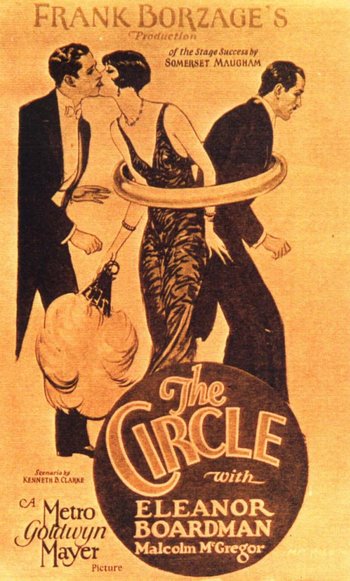
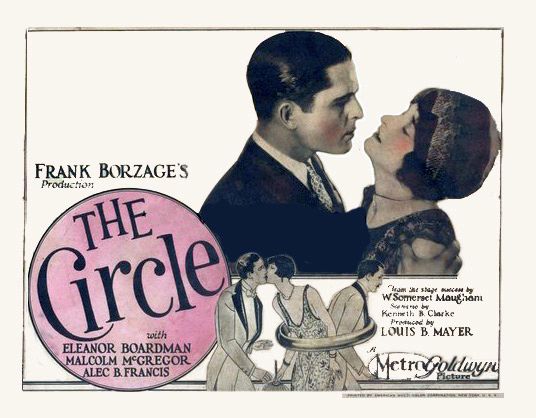
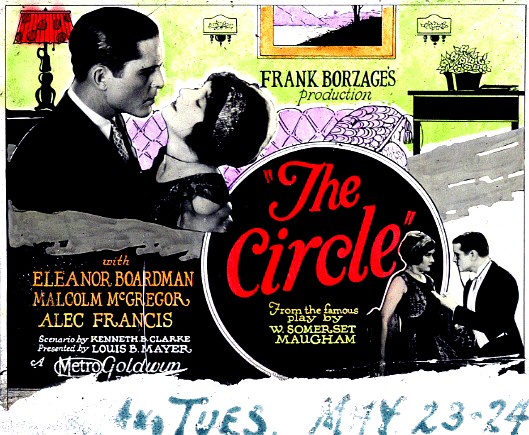
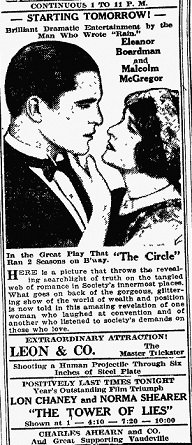
Above: A lantern slide (left) and US newspaper ad (right).
Below: US herald cover and centerfold.
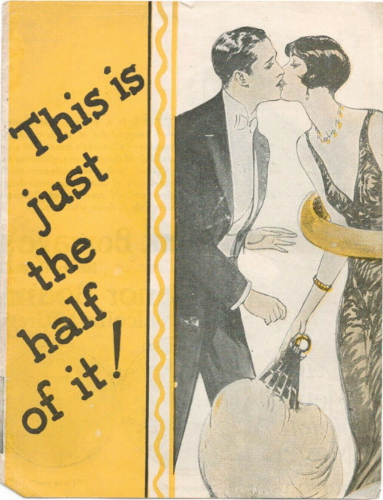
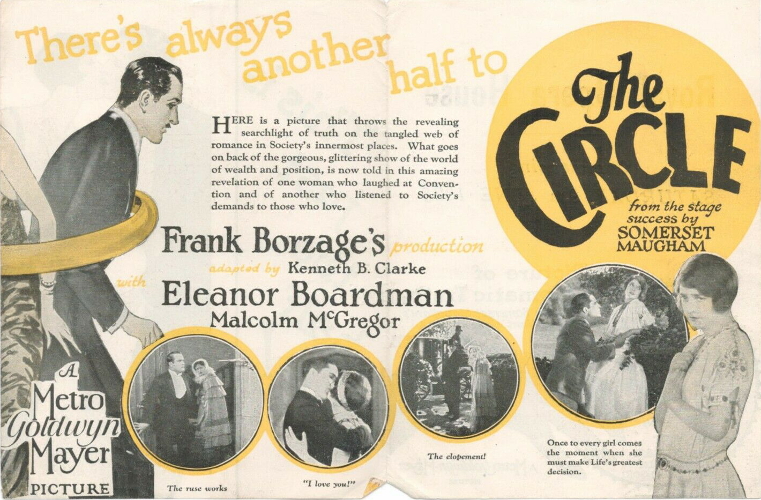
The Best of Everything